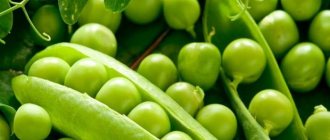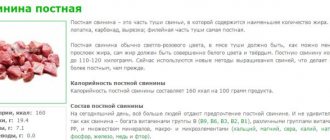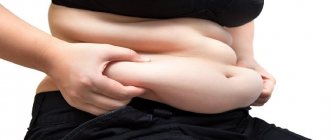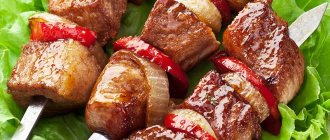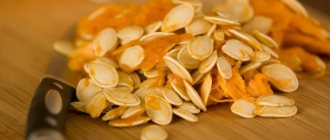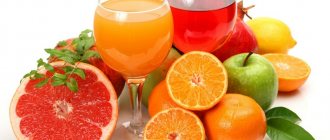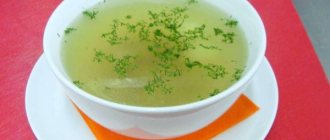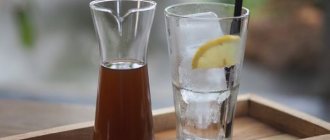Nowadays, therapeutic fasting is at the peak of popularity, which supposedly gets rid of all ailments and thoroughly cleanses the body. However, not everyone can completely give up food (and in some methods, water) for several days. Some lack motivation, others due to character, and others due to health conditions.
But there is one gentle system that doesn’t seem to allow you to eat, but at the same time doesn’t leave you with a rumbling stomach. At the same time, it allows you to achieve all the results that traditional concepts promise. This is a juice fast. First of all, he is associated with the names of Breus, Walker and Ohanian. In fact, there is a general, unique scheme for its implementation.
The essence
Conventional methods involve abstaining from food and only in exceptional cases relaxation. For example, you are allowed to eat a slice of lemon during severe attacks of nausea or a teaspoon of honey when you can’t stand it any longer. Juice fasting is considered the most gentle, since, in addition to water, you are allowed to drink a limited amount of fruit or vegetable juice. And it is known to have valuable nutritional properties and is a storehouse of vitamins and microelements.
Such fasting differs from diets in that it prohibits solid food in the diet and any other drinks except juices and water.
There are proprietary methods:
- Marva Ohanyan (based on herbs, fruit and vegetable juices, cocktails and smoothies).
- Norman Walker (The Juice Cure).
- Rudolf Breuss (“Sokolechenie. Guide to the treatment and prevention of cancer”).
- Benjamin D. Horne (based on vegetable and fruit juices, fasting is prescribed for all 4 seasons).
You can choose one of them or follow the general guidelines.
You can't do without a good juicer
Juices sold in stores are absolutely not suitable for fasting - they contain too much salt, sugar and synthetic additives. Thus, in order to prepare about two liters of different juices daily, you will have to invest in a reliable juicer.
It should be noted right away that models with a centrifuge are not very suitable for your purposes. The juice in them oxidizes very quickly, and most of the valuable microelements remain in the pulp, that is, in waste.
Only auger juicers can produce the most healthy juice, both in small and large quantities. They are quite powerful, work at low speeds and produce completely live juice. In addition, they are universal, and allow you to squeeze juice not only from fruits, berries and root vegetables (beets, carrots, etc.), but also from leafy vegetables.
This means that you will be able to include in your diet (and not only during fasting) such healthy foods as juice from spinach, lettuce, cabbage, any greens and even pine needles (this highly vitaminized remedy has a choleretic, diaphoretic and expectorant effect) .
I hope, dear readers, you liked the article about how you can fast with juices. You can share links to it with your friends. And I wish you to enjoy juices more often - it’s such a pleasure!
results
If you organize fasting correctly and follow all the recommendations, you can achieve good results. This technique has a lot of advantages that set it apart from the rest:
- there is no weakness, as with normal fasting, since juices supply the body with additional energy, giving vigor and strength;
- you can choose a sufficient amount of consumption so as not to feel too strong pangs of hunger;
- inflammatory processes are extinguished;
- digestion improves;
- the risk of appendicitis is reduced;
- the symptoms of many chronic and colds are alleviated;
- toxins, waste, mucus, “dead” water are removed;
- the depressive state gradually disappears;
- weight loss (weight loss results can be up to 4 kg per week);
- The immune system is strengthened by feeding the body with vitamins and minerals.
Flaws
But not everything is rosy and good with juice fasting. They can cause various side effects that are so severe that you have to stop the trial. And not everyone is allowed to resort to them, since they are contraindicated in the presence of certain diseases. When deciding on such an experiment, you need to prepare in advance for all the pitfalls. The most significant of them:
- tooth enamel is destroyed;
- Stomach pain and heartburn may begin, as the acidic environment of the intestines is disturbed;
- a coating forms on the tongue, an unpleasant odor appears from the mouth;
- too powerful a laxative effect can lead to endless diarrhea (a signal to stop fasting);
- often feel dizzy;
- severe swelling appears on the face and legs;
- there are contraindications: gastritis, ulcers and other problems of the gastrointestinal tract, a tendency to allergies, liver and kidney failure, anorexia and other serious diseases.
Kinds
Depending on the ingredients
On vegetable juices
The most useful of all. Vegetables are not as high in calories as fruits, and, unlike them, do not contain fructose and glucose. They are not acidic, so you don’t have to worry about the acid-base balance in the body. Do not destroy tooth enamel. They have a minimum of contraindications. Weight loss happens much faster with them. The only negative is that many people cannot stand the bland taste of most of them. After all, neither salt nor sugar can be added.
On fruit
The most delicious of all. Saturation, aroma, sweetness allow you to enjoy the process. However, they are higher in calories and contain fructose and glucose. The result is insulin surges in the blood, awakening of appetite instead of satisfying hunger, and weight loss not as fast as one would like. But the most important thing is that they contain a lot of organic acids, which can seriously disrupt the functioning of the gastrointestinal tract. Therefore, it is better to either alternate them with vegetables, or dilute them half with water.
On berry
Rarely does anyone practice this option. Only if you have access to a large number of berries for at least a week, then yes, you can do such a fast. It is almost as tasty as fruit juices, and vitamin C is useful for strengthening the immune system. However, they contain even more acids, which means the consequences for the gastrointestinal tract can be disastrous.
Combined option
The most convenient option. Firstly, you can drink any juice. For example, in the morning - vegetable, at lunch - fruit, for dinner - berry. Secondly, mono-alternation gives a good effect: today - only tomato, tomorrow - only orange, the day after tomorrow - only strawberry. Thirdly, they can be mixed with each other: fruit and vegetable and fruit and berry mixes will add new taste sensations and diversify the diet, allowing you to last as long as possible.
Depending on the timing
1 day
A typical fasting day on juices, from which you can start practicing this type of fasting. If you do them regularly (once a week) for 2-3 months, you will be well prepared for the main test.
You can read about how to properly organize one-day juice therapy here.
3 days
The next step on the path to juice fasting. Here you can try mono-variants without harm to your health: for example, drink only tomato, orange or grapefruit juice. It cannot be called therapeutic (the period is too short), but it is quite cleansing.
7 days
The optimal option is fasting, during which the body will have time to cleanse itself of everything unnecessary and a certain weight loss will occur. It is quite easy to carry.
10 days
For such a period, it is better to adopt the ten-day method of Marva Ohanyan. She describes in detail:
- How much you can drink: start with 0.5 liters, but gradually increase to 1 liter per day.
- When: an hour - a glass of juice, an hour - a glass of herbal decoction. The pattern is repeated from morning to evening.
- In what form: do not dilute with water.
- Which is better: among her favorites are citrus fruits, carrot-beetroot, cabbage, tomato, etc.
30 days
Those who intend to endure such a long marathon should focus on the method of Rudolf Breuss. Ideally, the full course lasts 42 days, but if someone can’t stand it, you can stop earlier. This is one of the best juice fasting systems with detailed descriptions of how, what to do and on what day. It is gradual and, judging by the reviews, quite easily tolerated. Moreover, many plan a 30-day period as the most convenient in calendar terms.
There are those who suggest juice fasting for 60 days, but this is extremely dangerous for health and life, so it is better not to try such bold experiments.
What are the benefits of juice fasting?
Making juice from fresh products allows you to significantly increase the concentration of nutrients, and most importantly, makes it possible to obtain them in the most digestible form for the body. Freed from fiber, greens, vegetables, and fruits become the pure quintessence of various microelements and vitamins that directly enter the blood.
It is best to make juices from products with a solid consistency: it is more rational. For example, an orange or watermelon consists almost entirely of water, and by and large there is no significant difference between eating them whole or squeezed. Therefore, it is optimal to make juices from products such as apples, pears, and bananas.
Fruits and vegetables are foods that have fundamental differences. Fruits are absorbed by our body as the easiest food to digest. However, if the body is not accustomed to using them, then there may be problems with absorption. As for vegetables, our digestive system is not designed to digest solid fiber. It is not absorbed by the body, but at the same time it cleanses the intestines and the entire gastrointestinal tract in general. However, in the situation with juices, everything is somewhat different.
Juices, both from vegetables and fruits, are absorbed by the body almost one hundred percent. There is an opinion that squeezed drinks do not need any enzymes at all: the liquid is simply absorbed through the intestinal walls. Therefore, if you set a goal to get the benefits of vegetables, then simply making a salad is not enough - for maximum absorption, they need to be consumed in the form of juice. And during fasting it will be positive.
It is worth noting that some types of juices are not advisable to drink on an empty stomach. For example, beetroot will irritate the stomach and intestines, so when cooking, you can add carrots or dilute it with water. By the way, you can mix juices with each other without restrictions, since their absorption does not require the production of enzymes. And such a concept as “product incompatibility” is irrelevant here.
Juice fasting is good for cleansing the body of accumulated toxins. And most importantly, it can be practiced for a fairly long period even by those for whom the feeling of emptiness in the stomach is very painful, and the feeling of satiety is an important component of a harmonious life. Unlike the usual refusal of food, during which dizziness, weakness, nausea, a debilitating feeling of hunger, headaches, and so on may occur, in the process of juice nutrition the body receives all the necessary substances, and the cleansing process is more gentle, which allows you to avoid various negative symptoms.
Entrance
As with any other fasting, you need to be able to enter into a juice fast correctly. Ideally, you need to thoroughly prepare for this. Try a vegetarian or fruit and vegetable diet for a week. Then you can get acquainted with the basics of a raw food diet in practice.
Entry rules:
- Find like-minded people. Work on motivation. Get ready mentally.
- Switch to a vegetarian menu in 2 weeks. In a week - on a raw food diet.
- Over the course of a week, gradually include juices in the menu (starting with 100 ml and ending with 600 ml).
- Gradually reduce your daily caloric intake every day.
- As an exception, vegetable oil for dressing vegetable salads is allowed until the last day of entry.
- The night before, drink a laxative and do an enema.
At the entrance you need to try to get rid of bad habits and normalize your daily routine. Don't forget to coordinate your plans with your family.
Juice fasting phases
Juice fasting lasts from 2 to 7 days and consists of several stages:
- entering fasting;
- juice fasting phase;
- exit phase.
- The entry phase should cover half of the entire period (1 to 3 days). Nutrition in the first phase has its own characteristics. At this stage, you need to switch to vegetarian food, giving preference to raw fruits and vegetables. At the end of the preparatory period, supporters of strict fasting give themselves a cleansing enema or take a laxative, which cannot be called beneficial to health.
- The main phase is the second half of the term. It is at this time that one has to endure particularly strong attacks of hunger. The process of losing weight at this stage is greatly inhibited, as the body goes into energy saving mode, so the person suffers from attacks of lethargy, apathy, drowsiness, nausea and dizziness. Ardent adherents of fasting claim that at this time, getting rid of infections, parasites and “sick cells” occurs. Official medicine categorically disagrees with this, and states exactly the opposite - severe hunger reduces the body's defenses and makes it vulnerable to even minor infections.
- Breaking from fasting also poses a lot of difficulties for a person. The food regime during the exit phase must be very strict, since it is strictly forbidden to pounce on food. And the point here is not only that all the lost kilograms will immediately return a hundredfold. The shock food load leads to the fact that after a heavy meal, the blood sugar and cholesterol levels jump sharply, and the intestines, which have become lazy during fasting, can completely stall, and then extremely painful and dangerous intestinal obstruction occurs.
The feeling of hunger at the exit stage is difficult to satisfy - it does not disappear even after a hearty lunch. This is due to the fact that the body has lost many substances and urgently requires to make up for the loss. The exit phase lasts about three days.
Basic recommendations
To properly organize a juice fast, you need to know some of the features of its implementation. The recommendations below will help you avoid mistakes and undesirable consequences.
Selection of ingredients:
- Juices from fruits, vegetables and berries are allowed.
- They can be either mono- or multi-component.
- It is better to give preference to seasonal products typical of your area.
- Take fresh vegetables and fruits - dried, canned and frozen will not give the same effect.
Cooking process:
- Fasting is carried out on freshly squeezed juices. Store-bought items excluded.
- A blender is excluded, as the result will be puree, which is prohibited during fasting.
- No sugar, no sugar substitutes, no honey, no salt - additional ingredients are prohibited. The exception is ginger root and garden greens.
- The vegetables are thoroughly washed, but not peeled - they are sent directly into the juicer: it contains the maximum amount of nutrients.
- Some people drink juices with pulp, but Ohanyan, for example, does not welcome this and recommends passing them through a strainer after using a juicer.
- You can prepare the right amount of juice in the morning to drink throughout the day. Yesterday's, even if it was in the refrigerator, is not recommended to be consumed.
- To dilute with water or not and in what proportions is everyone’s personal decision. Experts disagree on this matter.
Use:
- When consumed, the juice should be at room temperature.
- You should not drink more than 1 glass at one meal.
- It is better to do this through a tube so as not to damage the tooth enamel.
- Drink in small sips, prolonging the pleasure.
- The recommended daily volume is from 200 ml to 1 liter. The smaller it is, the more effective fasting promises to be.
Remember to lead a healthy lifestyle and exercise in moderation. Only compliance with these recommendations guarantees that therapeutic fasting will be effective.
Juice diet or Walker fasting
Many people who practice fasting say that it not only helps to lose weight, but also renews the entire body as a whole. The human body is cleansed of waste and toxins, and the functioning of the gastrointestinal tract is restored. In general, you feel lightness and a surge of strength.
Today, there are many options for juice diets, which vary from the amount of juice allowed and from its components. So, there are fruit, vegetable and mixed types of diets. These diets also differ in duration: from the simplest options in the form of fasting days on juices, to multi-day diets lasting up to 40 days.
Among the most famous juice diets is the 10-day juice diet of Marva Ohanyan. It is based not only on fruit and vegetable juices, but also herbal infusions, cocktails and smoothies. The Rudolf Breuss juice therapy course is designed to last from 30 to 42 days.
Norman Walker's juice diet is designed for only 7 days - this is the optimal duration, since such a period is easier to maintain and significant results can also be obtained within a week. The scientist conducted a series of studies, as a result of which he established that it is necessary to maintain an alkaline environment in the body. If acidification of the body occurs, this leads to illness and aging of a person. Warren studied which foods oxidize and which alkalize the body. Based on these data, he created a diet based on juices that would create a normal acid-base balance. The juices consumed must be “live”, that is, freshly squeezed. Nutrients are stored in juices for 30-40 minutes after preparation. There is no talk about packaged or industrially produced juices - they are just a mixture of sugar, water and many other components that the body does not need.
When squeezing juices, use a juicer; the use of a blender is not allowed, since the juice will contain pulp, and this is a puree - food, and not a juice - liquid. It is believed that juices are absorbed 100 percent. Its absorption occurs in the intestines. Neither the pancreas nor the liver are involved in the work. In this way, we relieve our body of hard work.
Juice requirements:
- Freshly squeezed (maximum 30-40 minutes after preparation).
- Pulp content is not allowed.
- You should not add sugar, salt or honey to juices.
- All fruits and vegetables are squeezed with their skins on.
- Most juices are not diluted with water, with the exception of citrus and thick juices.
- The liquid should be at room temperature.
- Only 1 glass of juice is drunk at one time.
- The daily volume of juice is up to 1 liter.
- We drink juices through a straw so as not to damage the enamel of our teeth.
- Moderate physical activity. Juice fasts consume a low amount of calories, so overconsuming calories can lead to weakness or even dizziness and fainting.
Any juice diet should be started gradually. A week before the expected start, remove unhealthy foods from your diet: fried, fatty, with harmful chemical components. Make the menu as organic as possible and the portion sizes smaller. Increase the amount of juice you consume every day. Start with 100 grams and increase this volume to 600 milliliters per day. On the eve of starting a juice diet, cleanse your intestines with an enema or laxative.
We remember the main rule - you can drink freshly squeezed juices from any fruits and vegetables with skins, but in total quantities up to 1 liter per day. If you feel thirsty between juices, you can quench it with either water or herbal tea. It is also allowed to combine several types of juices at a time.
There are several types of juices that are best not consumed on an empty stomach - citrus juices and beet juice. Beet juice irritates the walls of the stomach and intestines, so add carrot juice or dilute it with water. It is better if beet juice is left in the refrigerator for a couple of hours before drinking. By the way, fruit juices are absorbed faster and provide more energy, as they contain carbohydrates. Vegetable juices are rich in fiber, which keeps you fuller longer and cleanses your intestines.
Fasting on juices is easier to tolerate, since juices are saturated with vitamins and microelements, which means a person feels less loss of strength.
During a vegetable juice fast, it is especially good to consume tomato, cabbage, carrot, beet and pumpkin juices. You can also add healthy juice from spinach, cucumbers and kohlrabi to your diet.
Popular fruit juices: apple, banana, orange, lemon, grape, grapefruit, pear and tangerine.
If you easily lasted 7 days on a juice fast, you can extend it for another 7 days. As a last resort, a juice fast is allowed for a maximum of 30 days. Otherwise, the body will become exhausted, which can even lead to death.
Not everyone can do a juice fast. For those suffering from diabetes mellitus, diseases of the gastrointestinal tract, pregnant women, lactating women, children and adolescents, this type of fasting is strictly contraindicated.
If you are not one of the people listed and are planning to try juice fasting, we advise you to be motivated and warn your loved ones about your intentions so as not to give in to the temptation of regular food.
After you have followed the diet and lost, according to average statistics, about 4 kilograms per week, exit it as smoothly as you entered. You should not immediately return to your usual diet. To get out, gradually introduce more solid foods into your menu, adding liquid porridges with water, puree soups, chopped fish and chicken.
Whatever juice diet you choose, remember the rules and deadlines for compliance. Cleansing the body should be beneficial, not harmful.
Exit
In terms of timing, the exit from juice fasting should be either the same as it itself, or 1.5-2 times longer. If it is organized incorrectly, the consequences can be tragic.
It's a sad fact. In 2006, a case was recorded in Russia when a girl (30 years old) tried to break fast on the 43rd day, but due to the deterioration of her condition, she abandoned it and continued abstinence. On the 60th day she died of exhaustion.
Therefore, pay special attention to this stage. Don't rush into food on the first day. Continue drinking juices for a week, but gradually add pulp first, then chopped nuts, and prepare a smoothie. Soups should be pureed, porridges should be liquid and water-based. Milk, fish, meat are out of the question during the first 2 weeks. Each new product is introduced in minimal quantities. The main rules for exiting are not to overeat and if there is the slightest deviation in health, consult a doctor.
You can read more about how to properly break fasts in our separate review.
Mistake No. 3. You can lose weight with juice
It happens that they recommend sitting on juice for a day. In principle, if you are a healthy person, such a one-day juice diet will not harm you. But there will be no benefit either. However, juices contain too much sugar and cause sudden spikes in blood levels.
If you really want to lose weight and go on a liquid diet for a day, then it’s easier to drink just water. That's all. Juice, due to its high sugar content, whets your appetite, making you want to eat even more.
Previously, people often recovered from multi-day fasting with the help of freshly squeezed juices. And this is justified, since after several days of fasting, fermentation decreases and the body digests food poorly. Therefore, they try to break fasting with liquid food. Nowadays they are already giving up freshly squeezed juices after fasting; they are eliminating it with an avocado or banana smoothie, or with liquid oatmeal. It's better than juice.
Why are juices dangerous? Even fresh juices can be harmful in large quantities. Read more
Recipes
Making mono juice couldn't be easier. But, in order to diversify your diet, we bring to your attention several recipes for multi-ingredient drinks with unexpected combinations (proportions are not for everyone):
- carrots, apple, pear, parsley;
- melon, carrots, a pinch of grated ginger root;
- apricot, carrot;
- melon, celery and mint leaves;
- tomatoes, cucumbers, bell peppers, apples, dill;
- apple, cucumber, carrot, mint leaves;
- beets, carrots, grapefruit;
- watermelon, cucumber, beets, parsley;
- tomatoes, cucumbers, carrots, parsley.
Juice fasting is one of the most delicious and healthy, with minimal side effects and complications. If done correctly, the results will exceed all your expectations.
“Fruit juice is the same as soda”: disappointing conclusions of French researchers
It has long been known that so-called added sugars are harmful to health. They increase the risk of developing many serious diseases, including cancer. This has been proven in many scientific studies, for example, we published the results of one of them in March 2019.
Products with a high content of added sugars are primarily sweet soda, pastries, cakes and other confectionery, and candies. Regular consumption of sweets leads to obesity, one of the risk factors for cancer. Some studies have shown that added sugars may contribute to the development of cancer directly, without being linked to obesity.
According to a 2021 study by scientists at the Sorbonne Paris Cite University, 100% fruit juices are not much better.
The study involved 101,257 adults in France. Scientists monitored their health and tracked what drinks they drank for five years. Drinks with a sugar content of more than 5%, including 100% fruit juices not artificially sweetened, were classified as “sweet.”
During follow-up, 2,193 cases of cancer were diagnosed in study participants. Moreover, most of the cases were registered among people who regularly consumed sugary drinks.
It was found that regular consumption of drinks with high sugar content significantly increases the risk of developing cancer in general and malignant breast tumors in particular. For every 100 ml of sugary drinks consumed daily, the risk of cancer increases by 18%. This connection was not observed for all cancers: for example, it was absent in the case of colon and prostate cancer.
Scientists made another interesting observation: people who drank a lot of soda with sweeteners, such as saccharin or aspartame, did not suffer from malignant tumors more often.
The study authors note that their findings need to be confirmed with larger studies, meaning they are not yet 100% certain. Nevertheless, there is reason to think - both for producers of juices and sodas, and for lovers of these products.
